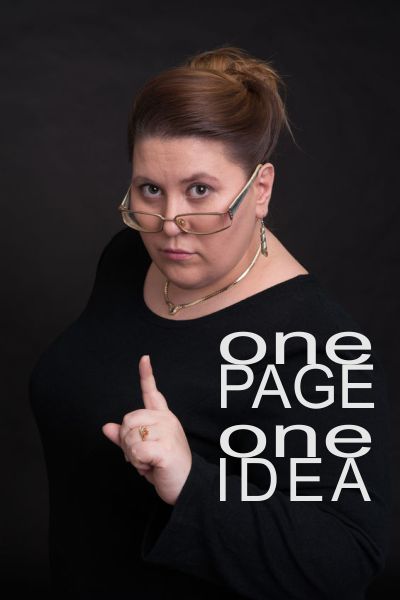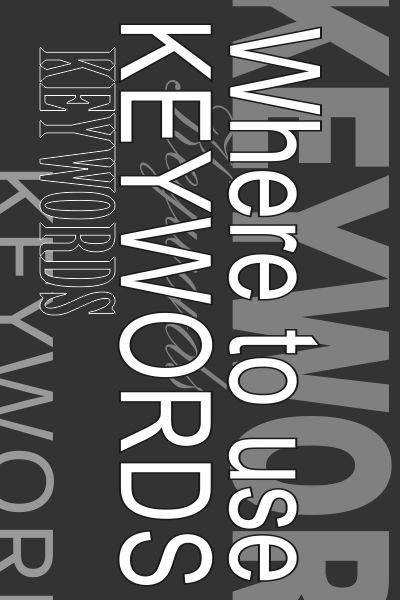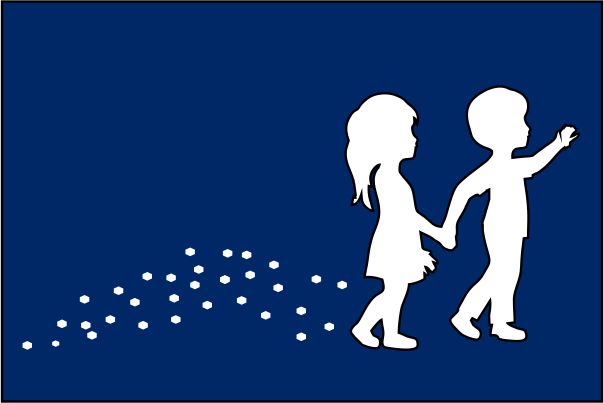Simple Steps to Great SEO

One Concept per Page
You may sell lots of different things or offer lots of different services but for a search engine to understand what your page is about there should be a single concept. The concept can be a category and you can explore specific products or services on linked secondary pages, but each page should stand on its own developing a single point, topic or theme.
Choose Keywords
Search engines use keywords to get an idea of what your page is about. The keywords come from user intent such that the search engine tracks a WORD that users query and tracks where that user ends up. As this happens multiple times across many users, that WORD (or phrase) becomes a KEYWORD.
Where to Find Keywords
There are many places on the web to find keywords. First you should make a list of 5 - 15 words or phrases describing your product or service for which you are creating a page. To find keywords one of the best places is the Google Keyword Planner inside Google AdWords. You will require and account to use the Keyword Planner, but you can create an account and put any ads on hold. Here is a good guide for using the Google Keyword Planner from BackLinko :
How to Use Google Keyword Planner
Disambiguation - Semantically Related Keywords
This topic can get deep, but don't worry I am just going to touch on it here. Disambiguation is the concept of using semantically related keywords to distinguish your product or service from similarly named products or services. This is best understood by example. I have a client in the HVAC - Heating, Ventilation & Air-conditioning industry, but he specializes in industrial refrigeration. He must use "HVAC" in his page but does not want to show up in search for homeowners looking to have their air-conditioning fixed. So we used the semantically related keywords like "refrigeration" and "industrial" in his page to disambiguate him from service providers doing home A/C units or others working on ventilation-system air purification. It is important to distinguish yourself in this way
Webpage Structure: Where to use your keywords
After you have found 5 - 15 keywords for use in your page content, you need to know where to use them.
You should use keywords in:
- Page Title
- Page Meta Description
- Header Tags
- Image alt attribute
- URL structure
- Body Content in bold & emphisize (italic)
In the Page <title>
The <title> tag in the <head> section of your webpage is arguably the most important place to use your most important and broadest keywords. The title is also what shows up in search results and in the tab at the top of your browser. The title is limited to between 60 and 70 characters so you might form a title like this:
Industrial Refrigeration Maintenance | FrigAir | Toronto
It is important to have the company name. A location is optional and I only use it when the service is localized. An example for a product could be:
Little Black Dresses for All Occasions | FabGirl Designs
In the Page Meta-Description
The description meta tag is also in the <head> and looks like this:
<meta name ="Description" content="blah blah" />
The description meta tag can be used by Google in search results, but not necessarily. If Google feels a snippet from your page better matches the user query, they will use that instead of the description. The description is a good place to use alternate keywords to your title like synonyms. Also semantically related keywords to distinguish this page from others. The description should also sell your product or service because it may show up in the search results and you want to give users a reason to click through to your website. The description should not be more than 170 characters - though this number has changed several times in the past few years. This is the meta-tag description for this page:
Search Engine Optimization - SEO - Getting found online. Simple Steps to Great SEO & surfacing your webpages to the page #1 in Search...or we can do it for you.

In the HTML Heading Tags
The proper use of html heading tags is one of the most important concepts in SEO and there is copious misinformation written about the use of heading tags. Heading tags are in the body section of a webpage and therefore are visible on the page. There are 6 heading tags h1 to h6 and generally they are progressively smaller in size, but this is not their main function.
Heading tags relate to page structure & the organization of content. Heading tags are not styling elements for sizing paragraph titles.
Heading tags are used to organize content.
- h1 tags should relate to the whole page and all other tags on the page should denote finer details relating to the concept presented in the h1 tag. There should only be one h1 tag on a webpage. The h1 tag should relate to the title and meta-description tags in the head section of the webpage
- There can be several h2 tags on a page and they should be used to head broad sections of information relating to the h1 tag
- H3 tags similarly separate concepts relating to the h2 tag above it
- H4 through h6 tags similarly head up sections of content that present sub-concepts of the lower-numbered tag preceding it
HTML Heading Tag Example
h1: Animals
h2: Domestic Animals
h3: Cats
h4: Breeds of Cats
h5: Siamese
h6: size
h6: Colour
h6: Life Expectancy
h5: Persian
h6: size
h6: Colour
h6: Life Expectancy
h3: Dogs
h4: Breeds of Dogs
h5: Husky
h6: size
h6: Colour
h6: Life Expectancy
h5: Doberman
h6: size
h6: Colour
h6: Life Expectancy
h3: Snakes...
Last Word About Headings
Heading tags should always be used in order, for example you can use several h4 tags, each heading content related to the h3 directly above it in the page.
New Convention in HTML5
The HTML5 convention generally separates broad concepts using <section> and uses an h1 tag in each section. So a single webpage can have several h1 tags where previously only a single h1 tag was used on page. There is debate amongst web developers to the usefulness of this. It is felt by some that Google still parses webpages using the older convention with only one h1 tag per page
In the Body with Bold & Italics
Keywords must appear in the body content of your webpage. It is a good idea to bold some of the keywords by wrapping it in the <strong>keyword </strong> html tag. You can also emphasize a keyword changing the font-style to italic. This is easily done by wrapping the keyword in the <em>keyword </em> html tag.


In the Image ALT Attribute
The image alt attribute, sometimes referred to as an alt tag, is a phrase describing the image. It is used by screen readers for the visually impaired. A well-formed alt attribute should describe what the image is about, and relate it to the page using keywords and I like to put the company name in there too. The html tag to render this image would look something like this"
<img src="img/woman-pen-clipboard.png"
alt="Woman holding a pen and clipboard - writing down keywords for SEO | HarrisWeb Creative" />
Note: The alt="..." attribute above describes the image for the visually impaired, plus I have used 2 keywords, i.e. keywords & SEO and used my company name. If I was a very localized business I may have added "| Milton Ontario" to the end of the alt attribute






